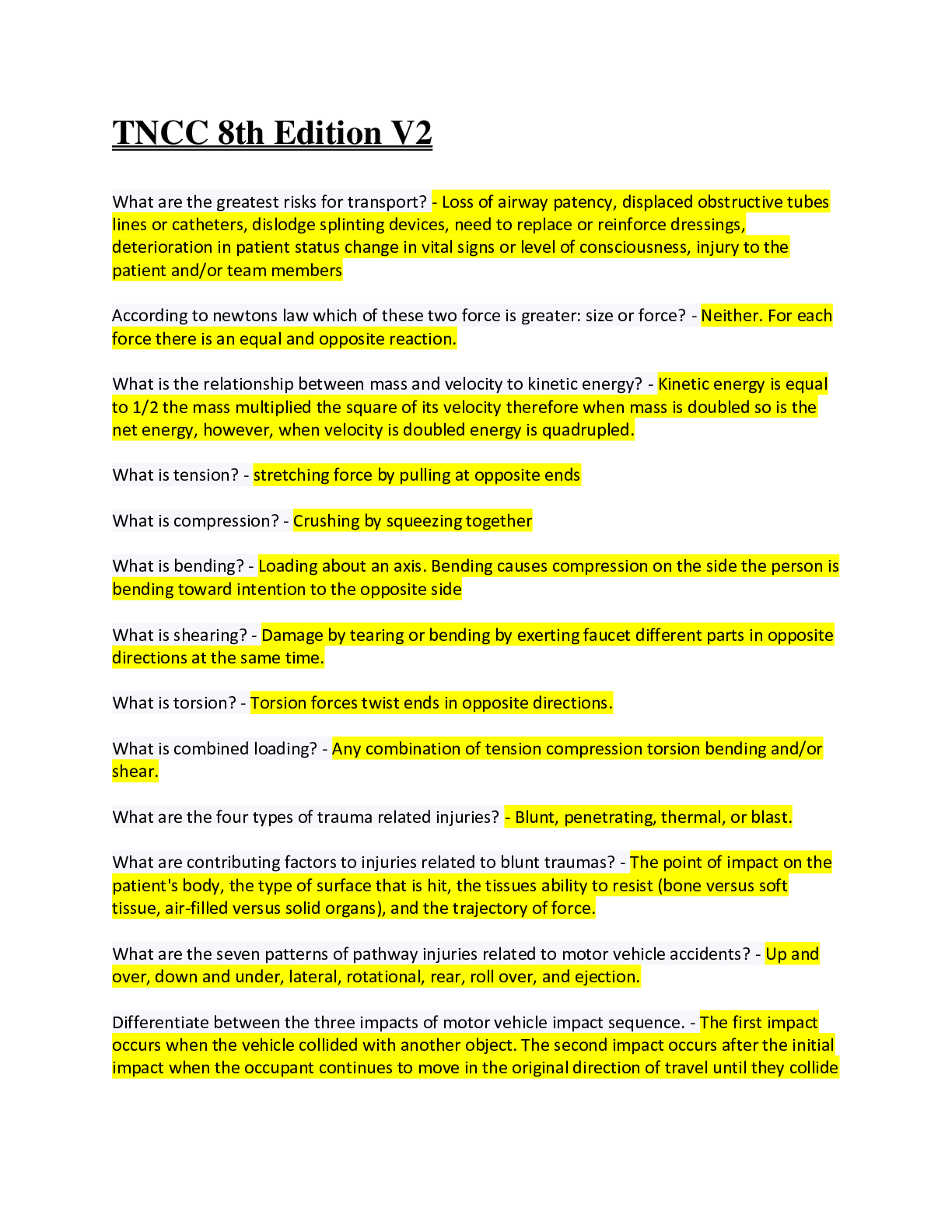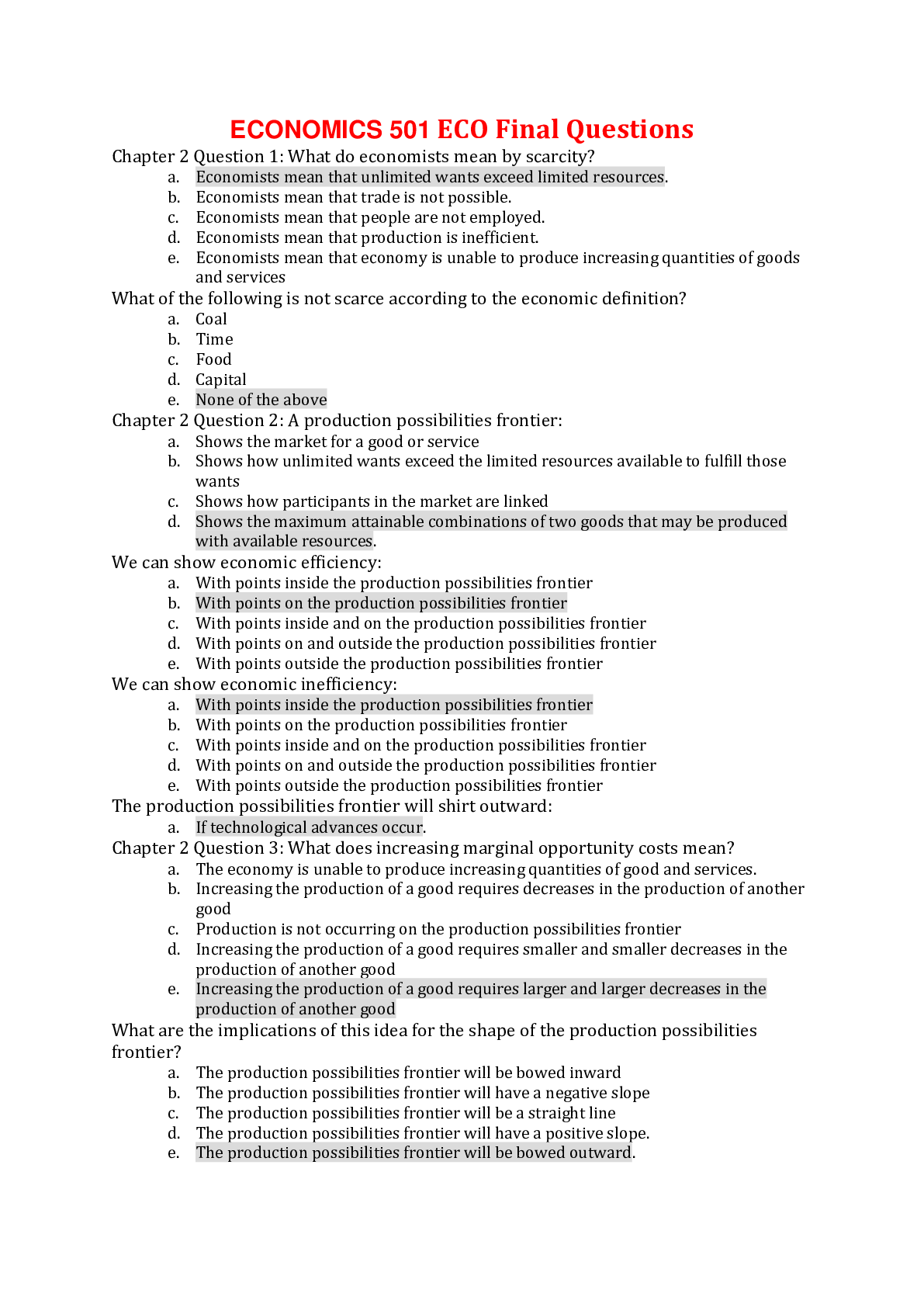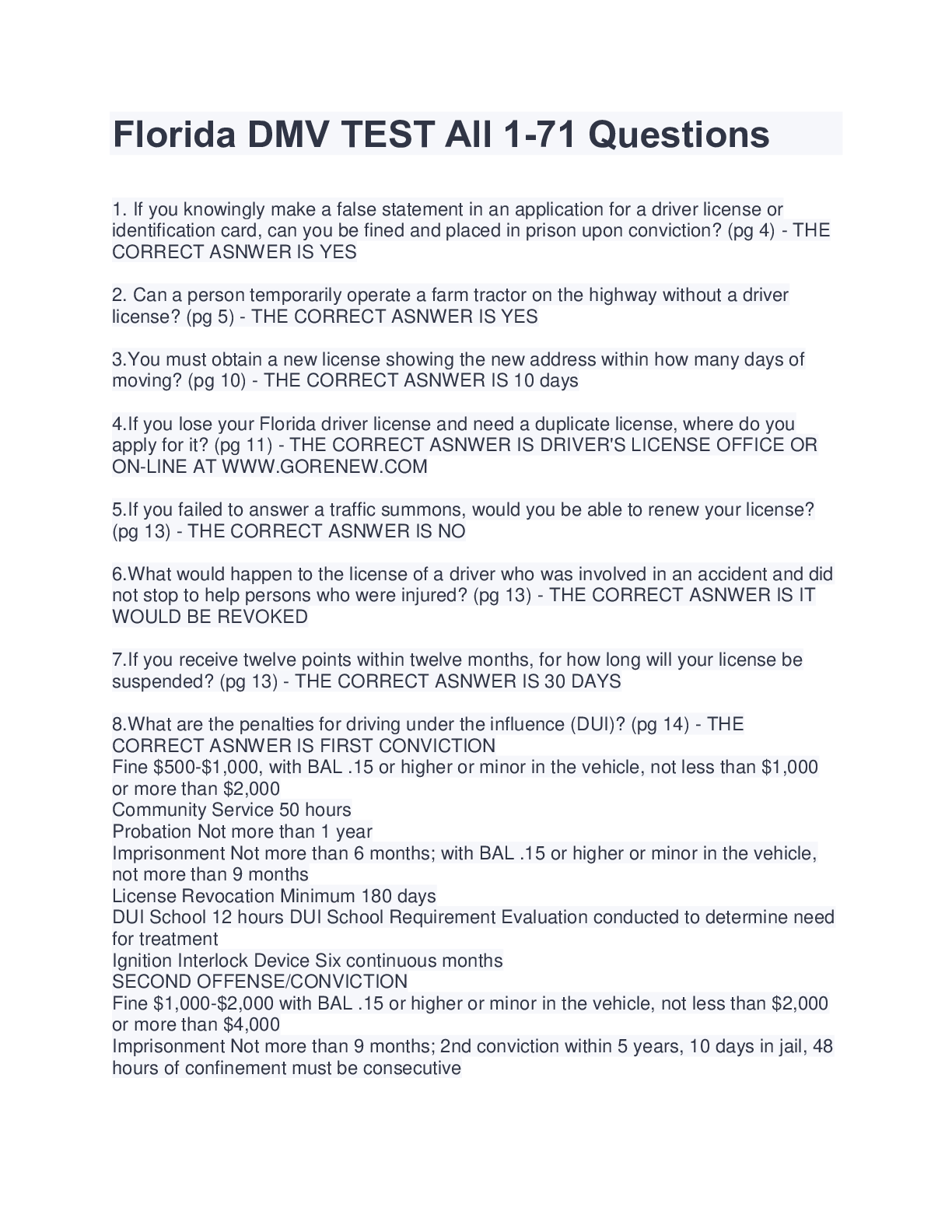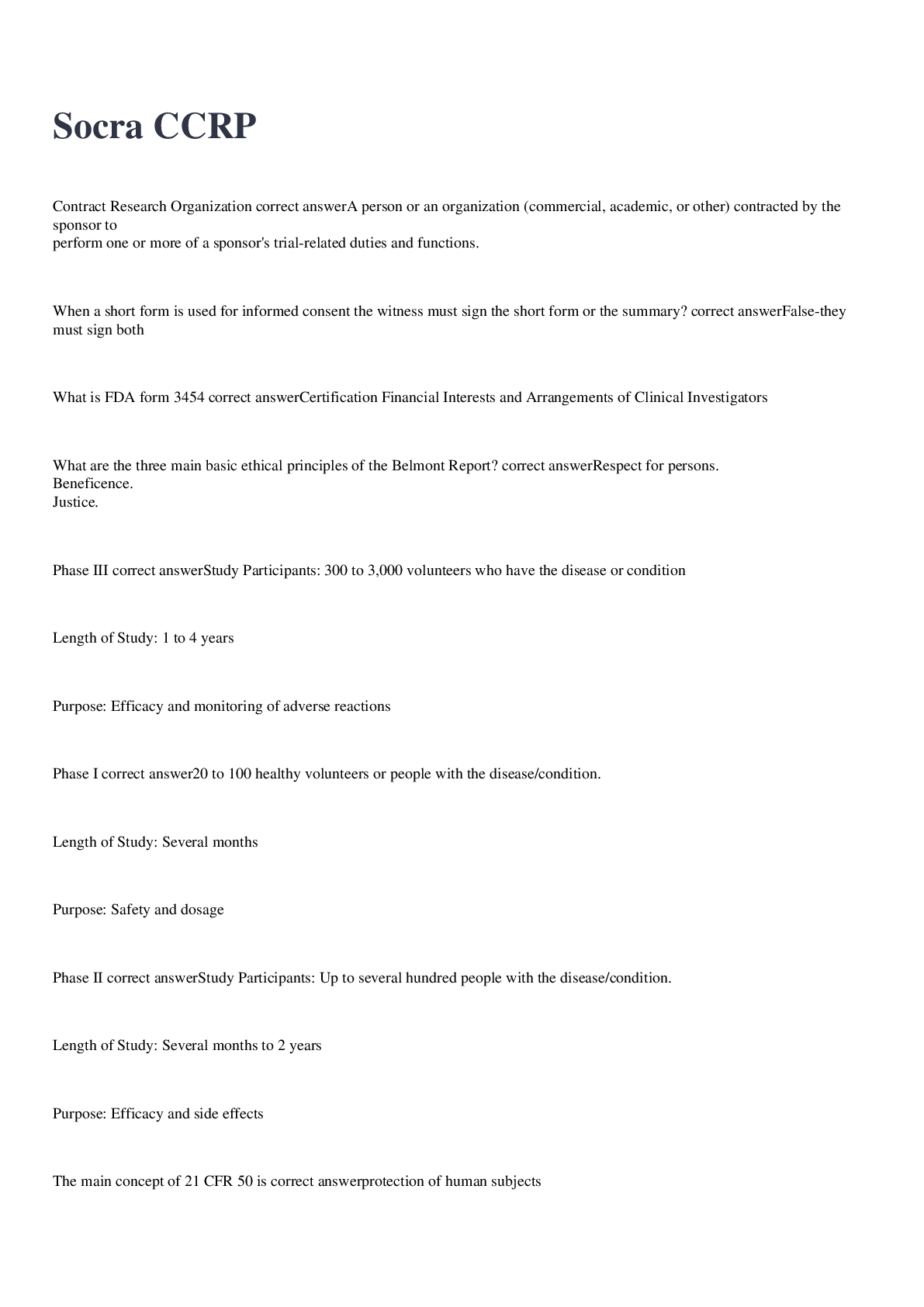*NURSING > EXAM > NURS 105 NCLEX QUESTIONS_Endocrine (2020) – Faulkner CC | NURS105 NCLEX QUESTIONS_Endocrine (2020) (All)
NURS 105 NCLEX QUESTIONS_Endocrine (2020) – Faulkner CC | NURS105 NCLEX QUESTIONS_Endocrine (2020)_Already Graded A.
Document Content and Description Below
NURS 105 NCLEX QUESTIONS_Endocrine (2020) – Faulkner CC (Medical Surgical Nursing) Endocrine What effect on circulating levels of sodium and glucose does the nurse expect in a client who has been ta... king an oral cortisol preparation for 2 years because of a respiratory problem? (pg 1259) A. Decreased sodium; decreased glucose B. Decreased sodium; increased glucose C. Increased sodium; decreased glucose D. Increased sodium; increased glucose Which hormone levels should the nurse expect to change in response to a client receiving a continuous cortisol infusion over a 24-hour period when the endocrine negative feedback mechanism is functioning properly? (7th edition pg 1364) A. Lower-than-normal serum cortisol levels; lower-than-normal serum ACTH levels B. Lower-than-normal serum cortisol levels; higher-than-normal serum ACTH levels C. Higher-than-normal serum cortisol levels; lower-than-normal serum ACTH levels D. Higher-than-normal serum cortisol levels; higher-than-normal serum ACTH levels Which precaution or action is most important for the nurse to teach the client who is to collect a 24-hour-urine specimen for endocrine testing? (pg 1264) A. Eat a normal diet during the collection period B. Wear gloves when you urinate to prevent contamination of the specimen C. Urinate at the end of the 24 hours and add that sample to the collection container D. Avoid walking, running, dancing, or any vigorous exercise during the collection period. Which client assessment finding indicates to the nurse the need to assess further for a possible endocrine problem? (7th edition pg 1367) A. A history of taking oral contraceptives for more than 2 years B. A weight loss of 5 lbs in the past 6 weeks without dieting C. The client’s father’s diagnosis of prostate cancer D. A recent need for corrective lenses For which client does the nurse question the prescription for androgen replacement therapy? (pg 1268) A. 35-year-old man who has had a vasectomy B. 48-year-old man who takes prednisone for severe asthma C. 62-year-old man with a history of prostate cancer D. 70-year-old man who has hypertension and type 2 diabetes Which precaution is most important for the nurse to teach the female client undergoing drug therapy with estrogen and progesterone for hypopituitarism? (7th edition pg 1373) A. “Use a nonhormonal form of contraception to prevent an unplanned pregnancy.” B. “Wear a hat with a brim and use sunscreen when outdoors.” C. “Do not smoke or use nicotine in any form.” D. “Avoid drinking alcoholic beverages.” The nurse notes that the mustache dressing of a client who is 12 hours postoperative from a transsphenoidal hypophysectomy is wet. What is the nurse’s best action? (7th edition pg 1378) A. Reapply a dry dressing and document this expected response B. Ask the client whether other symptoms of a cold are present C. Notify the surgeon or the Rapid Response Team D. Test the drainage for the presence of glucose Which urine properties indicate to the nurse that the client with syndrome of inappropriate antidiuretic hormone (SIADH) is responding to interventions? (pg 1273) A. Urine output volume increased; urine specific gravity increased B. Urine output volume increased; urine specific gravity decreased C. Urine output volume decreased; urine specific gravity increased D. Urine output volume decreased; urine specific gravity decreased Which response in a client with diabetes insipidus indicates to the nurse that another dose of desmopressin acetate (DDAVP) is needed? (7th edition pg 1380) A. Urine output and specific gravity are increased B. Urine output is increased and urine specific gravity is decreased C. Urine output and specific gravity are decreased D. Urine output is decreased and urine specific gravity is increased The serum electrolyte values for a client with syndrome of inappropriate antidiuretic hormone being treated with tolvaptan (Samsca) indicate the following changes within the past 12 hours. Which change does the nurse report immediately to the health care provider? (7th edition pg 1381) A. Serum potassium decrease from 4.2 mEq/L to 3.8 mEq/L B. Serum sodium increase from 122 mEq/L to 140 mEq/L C. Serum calcium increase from 9.5 mg/dL to 10.2 mg/dL D. Serum chloride decrease from 109 mEq/L to 99 mEq/L The client who is about to have a unilateral adrenalectomy for an adenoma that is causing hypercortisolism asks the nurse if she will have to continue the severe sodium restriction after surgery. What is the nurse’s best response? (pg 1280) A. “No, once the tumor has been removed and your cortisol levels have normalized, you will not retain excess sodium anymore.” B. “No, after surgery you will have to take oral cortisol, which can be easily controlled so that your sodium levels do not rise.” C. “Yes, the fact that you are retaining sodium and have high blood pressure is related to your age and lifestyle, not the tumor.” D. “Yes, sodium is very bad for people and everyone need to eliminate sodium completely from their diets for the rest of their lives.” Which precaution is most important for the nurse to teach a client who is prescribed oral corticosteroids for hormone replacement therapy after a unilateral adrenalectomy? (7th edition pg 1388) A. “Do not stop taking this drug without consulting your prescriber.” B. “Avoid crowds and people who are ill.” C. “Be sure to take this drug with food.” D. “Reduce your salt intake.” Which manifestations are most often seen in general hyperthyroidism? Select all that apply (pg 1288) A. Increased appetite B. Cold intolerance C. Constipation D. Eyelid retraction E. Insomnia F. Palpitations G. Tremors H. Weight gain Why is a goiter often present in clients who have Graves’ disease? (7th edition pg 1396) A. The low circulating levels of thyroid hormones stimulate the feedback system and trigger the anterior pituitary gland to secrete more thyroid-stimulating hormone, which increases the numbers and size of glandular cells in the thyroid gland. B. The autoantibodies stimulate the inflammatory and immune responses to increase the number of white blood cells circulating in the thyroid gland, which increases tissue size without increasing the number of glandular cells. C. The excessive autoantibodies bind to the thyroid hormone receptor sites, which increases the number and size of glandular cells in the thyroid gland. D. The autoantibodies stimulate blood vessel growth and blood storage within the thyroid gland, increasing its overall size. For which assessment finding in a client who has severe hyperthyroidism does the nurse notify the Rapid Response Team? (pg 1291) A. An increase in premature ventricular heart contractions from 4 per minute to 5 per minute B. An increase in or widening of pulse pressure from 40 mm Hg to 46 mm Hg C. An increase in temperature from 99.5°F (37.5°C) to 101.3°F (38.5°C) D. An increase of 20 mL or urine output per hour Which is the nurse’s most important assessment before giving the client prescribed levothyroxine (Synthroid) the first oral dose of the drug? (7th edition pg 1403) A. Measuring heart rate and rhythm B. Checking core body temperature C. Asking about an allergy to “sulfa” drugs D. Determining the level of gastric motility The client has been taking levothyroxine (Synthroid) for 3 months reports all of the following conditions. Which condition indicates to the nurse that the drug dosage may need to be adjusted? (7th ed pg 1404) A. Difficulty sleeping B. Increased urine output C. Decreased sense of smell D. Difficulty remembering to take the drug The client scheduled to receive a radioablative dose of ¹³¹l for thyroid cancer asks how long he will need to use radiation precautions after receiving the treatment. What is the nurse’s best response? (7th ed p 1405) A. “Because the isotope collects in the tumor cells, precautions are needed until the cancer is completely gone.” B. “The dose of radiation is low, and most of it is excreted in the first week. Precautions are needed for only 2 weeks.” C. “You will need to use radiation precautions until the radiologist removes the radiation source from your thyroid gland.” D. “The radiation used is taken up by your thyroid gland, so only your thyroid is considered radioactive. Because the thyroid does not excrete to the outside of the body, precautions are needed only on the days you actually receive the treatment.” When taking blood pressure of a client receiving treatment for hyperparathyroidism, the nurse observes the client’s hand to undergo flexion contractions. What is the nurse’s interpretation of this observation? (pg 1298) A. Hyperphosphatemia B. Hypophosphatemia C. Hypercalcemia D. Hypocalcemia How is hypoglycemia prevented in the healthy person who does not have diabetes even after fasting for 8 hours? (pg 1302) A. Metabolism is so slow when a person sleeps without eating for 8 hours that blood glucose does not enter cells to be used for energy. As a result, hypoglycemia does not occur. B. Fasting for 8 hours triggers conversation of proteins into glycogen (glycogenesis) so that hyperglycemia develops rather than hypoglycemia. C. Lipolysis (fat breakdown) in fat stores occurs, converting fatty acids into glucose to maintain blood glucose levels. D. The secretion of glucagon prevents hypoglycemia by promoting glucose release from liver storage sites. The client newly diagnosed with diabetes asks why he is always so thirsty. What is the nurse’s best response? (7th edition pg 1413) A. “The extra glucose in the blood increases the blood sodium level, which increases your sense of thirst.” B. “Without insulin, glucose is excreted rather than used in the cells. The loss of glucose directly triggers thirst, especially for sugared drinks.” C. “The extra glucose in the blood makes the blood thicker, which then triggers thirst so that the water you drink will dilute the blood glucose level.” D. “Without insulin, glucose combines with blood cholesterol, which damages the kidneys, making you feel thirsty even when no water has been lost.” Which health problems are considered results of microvascular complications from long-term or poorly controlled diabetes mellitus? (pg 1306) A. Obesity and hyperglycemia B. Systolic hypertension and heart failure C. Retinal hemorrhage and male erectile dysfunction D. Diabetic ketoacidosis and hyperglycemic-hyperosmolar state Why is controlling blood glucose levels important? (7th edition pg 1416) A. High blood glucose levels increase the risk of heart disease, strokes, blindness, and kidney failure.” B. High blood glucose levels increase the risk for seizure disorders, arthritis, osteoporosis, and bone fractures. C. Low blood glucose levels increase the risk for peripheral neuropathy, Alzheimer’s disease, and premature aging. D. Low blood glucose levels increase the risk for obesity, pancreatitis, dehydration, and certain types of cancer. The client newly diagnosed with type 2 diabetes asks how diabetes type 1 and diabetes type 2 are different. What is the nurse’s best response? (7th edition pg 1418) A. “Diabetes type 1 develops in people younger than 40 years and diabetes type 2 develops only in older people.” B. “Diabetes type 2 develops in people younger than 40 years and diabetes type 1 develops only in older people.” C. “Patients with type 1 diabetes are at higher risk for obesity and heart disease, whereas patients with type 2 diabetes are at higher risk for strokes.” D. “Patients with type 1 diabetes produce no insulin and patients with type 2 diabetes produce insulin but their insulin receptors are not very sensitive to it.” A client with type 2 diabetes who also has heart failure is prescribed metformin extended-release (Glucophage XR) once daily. On assessment, the nurse finds that the client now has muscle aches, drowsiness, low blood pressure, and a slow irregular heartbeat. What is the nurse’s best action? (7th edition pg 1430) A. Assess the client’s blood glucose level and prepare to administer IV glucose. B. Reassure the client that these symptoms are normal effects of this drug. C. Hold the dose and notify the prescriber immediately. D. Administer the drug at bedtime to prevent falls. The client newly diagnosed with type 1 diabetes asks why insulin is given only by injection and not as an oral drug. What is the nurse’s best response? (7th edition pg 1431) A. “Injected insulin works faster than oral drugs to lower blood glucose levels.” B. “Oral insulin is so weak that it would require very high dosages to be effective.” C. “Insulin is a small protein that is destroyed by stomach acids and intestinal enzymes.” D. “Insulin is a “high alert drug” and could more easily be abused if it were available as an oral agent.” Which statement made by a client who is learning about self-injection of insulin indicates to the nurse that clarification is needed about injection site selection and rotation? (pg 1317) A. “The abdominal site is best because it is closest to the pancreas.” B. “I can reach my thigh best, so I will use different areas of the same thigh.” C. “By rotating sites within one area, my chance of having skin changes is less.” D. “If I change my injection site from the thigh to an arm, the insulin absorption may be different.” Which statement made by the client during nutritional counseling indicates to the nurse that the client with diabetes type 1 correctly understands his or her nutritional needs? (7th edition pg 1439) A. “If I completely eliminate carbohydrates from my diet, I will not need to take insulin.” B. “I will make certain that I eat at least 130 g of carbohydrates each day regardless of my activity level.” C. “My intake of protein in terms of grams and calories should be the same as my intake of carbohydrate.” D. “My intake of unsaturated fats in terms of grams and calories should be the same as my intake of protein.” While assessing the client who has had diabetes for 15 years, the nurse finds that he has decreased sensory perception in both feet. What is the nurse’s best first action? (pg 1328) A. Document the finding as the only action B. Examine the feet for manifestations of injury C. Test the sensory perception of the client’s hands D. Tell the client that he now has peripheral neuropathy [Show More]
Last updated: 1 year ago
Preview 1 out of 5 pages
.png)
Reviews( 0 )
Document information
Connected school, study & course
About the document
Uploaded On
Aug 25, 2020
Number of pages
5
Written in
Additional information
This document has been written for:
Uploaded
Aug 25, 2020
Downloads
0
Views
57

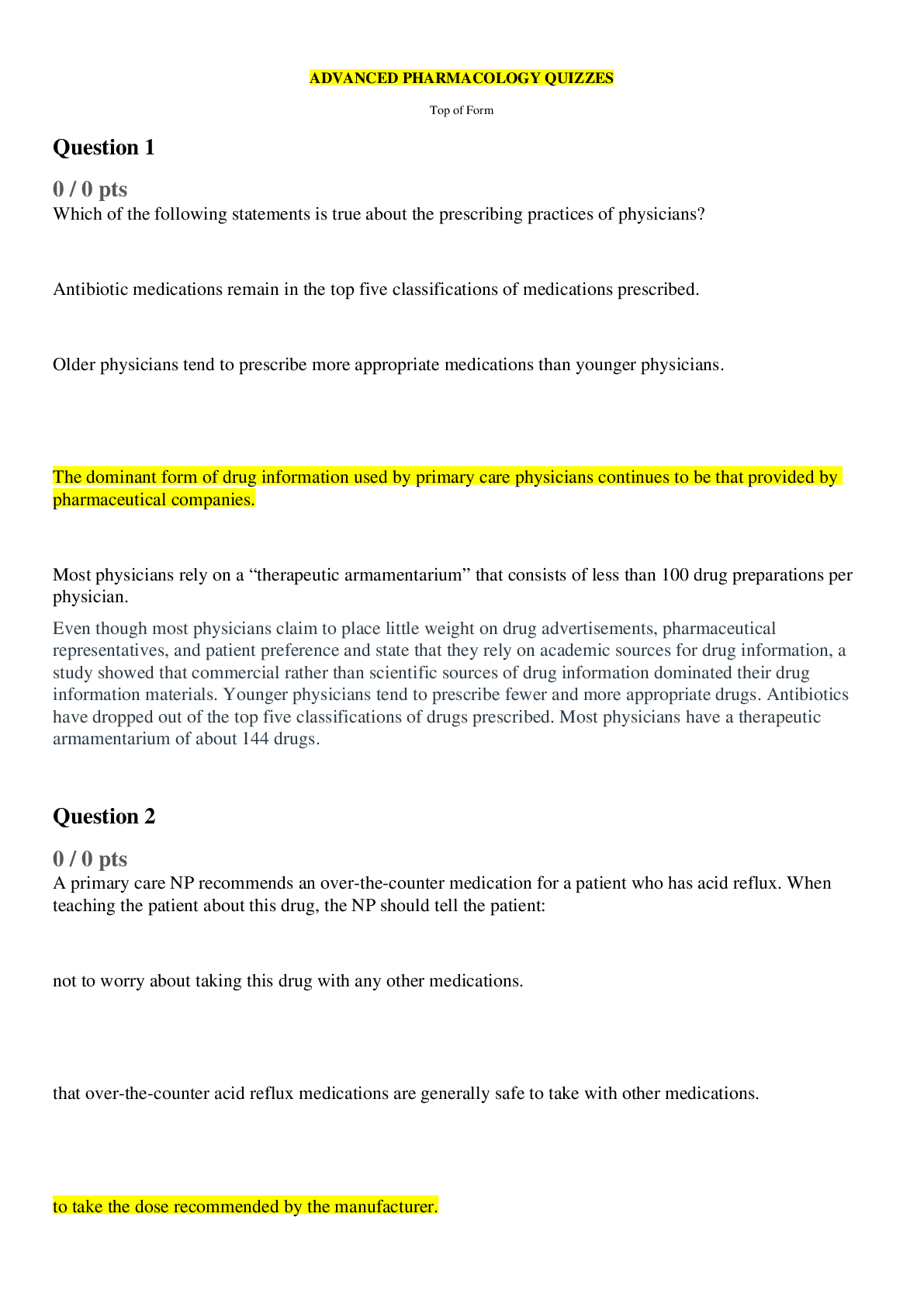
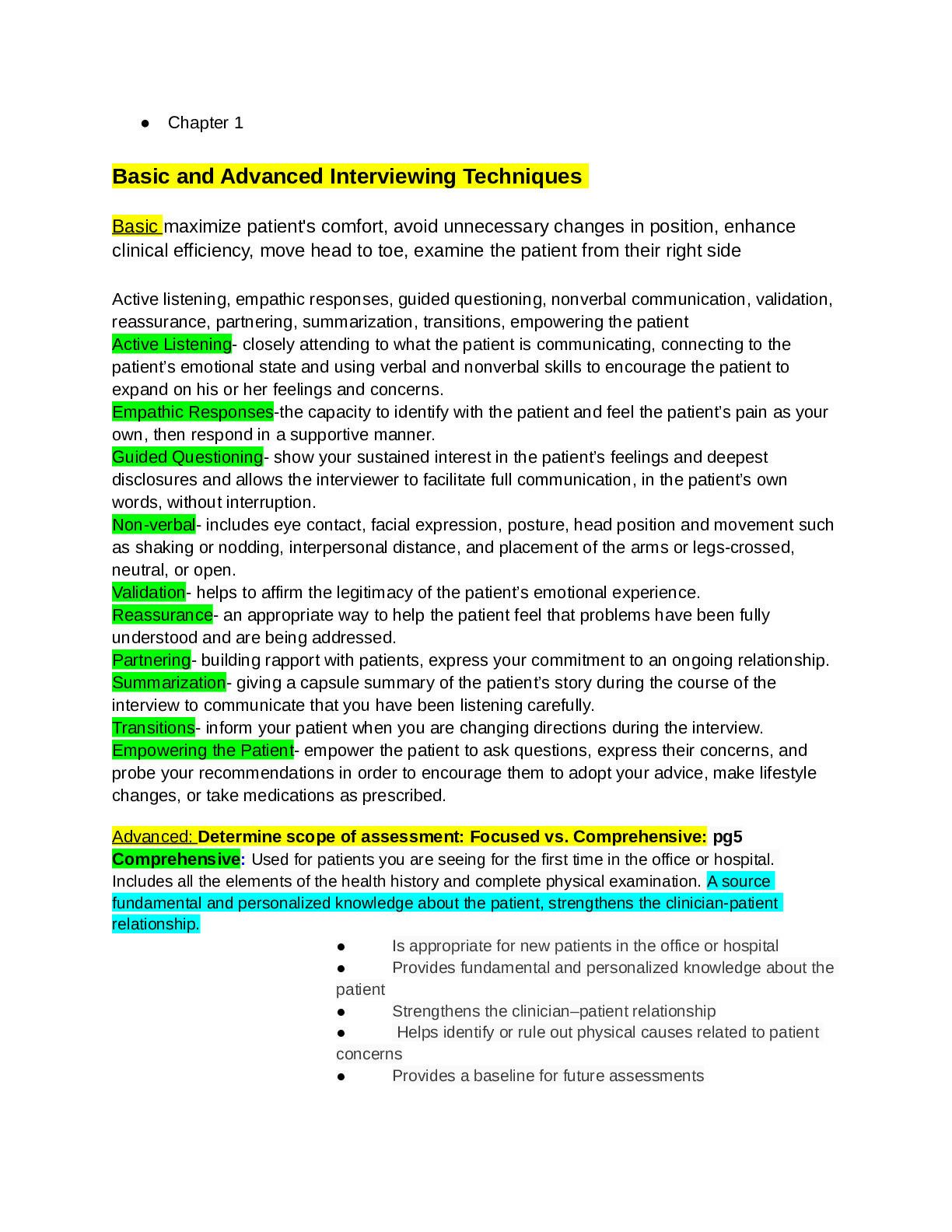
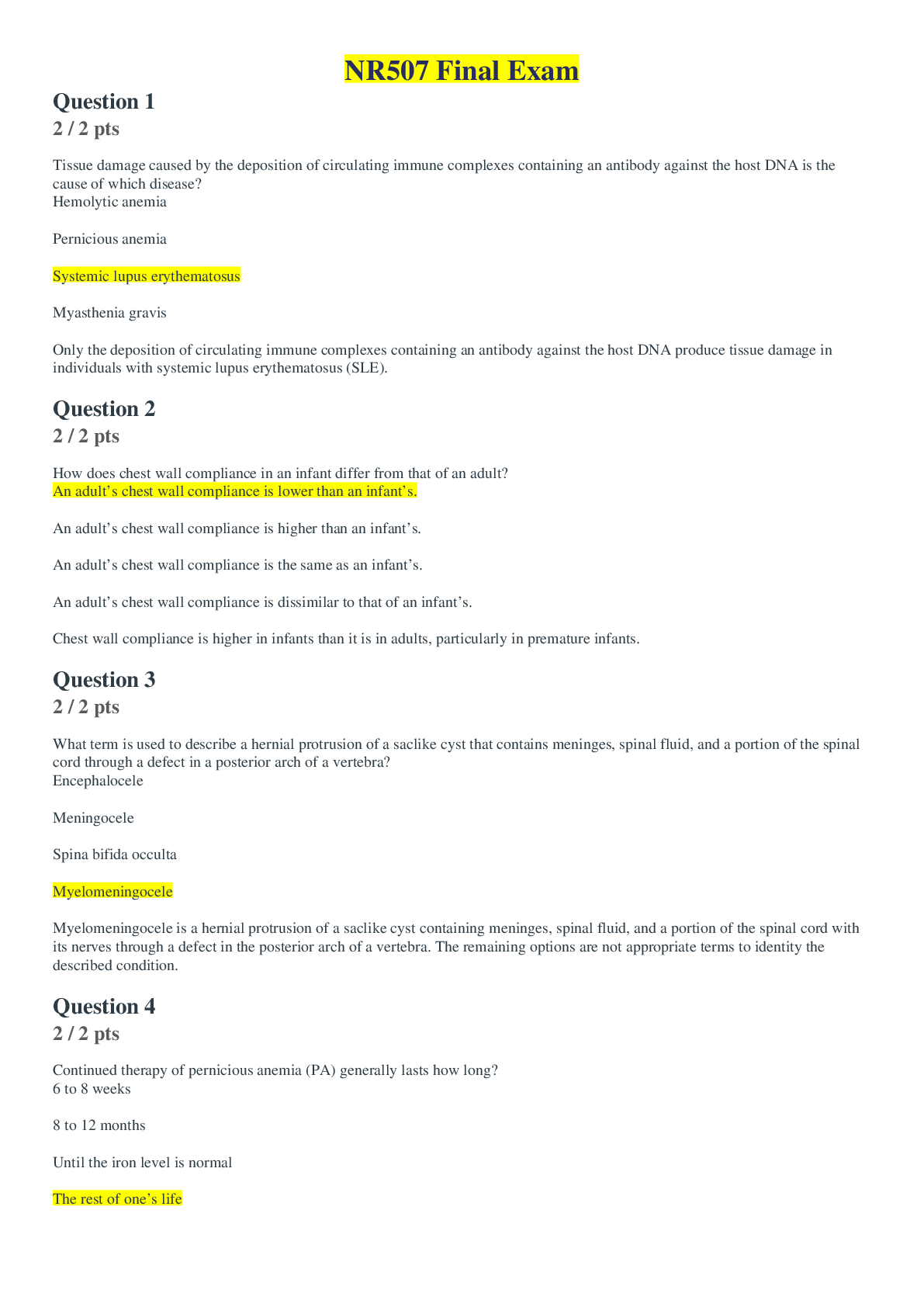
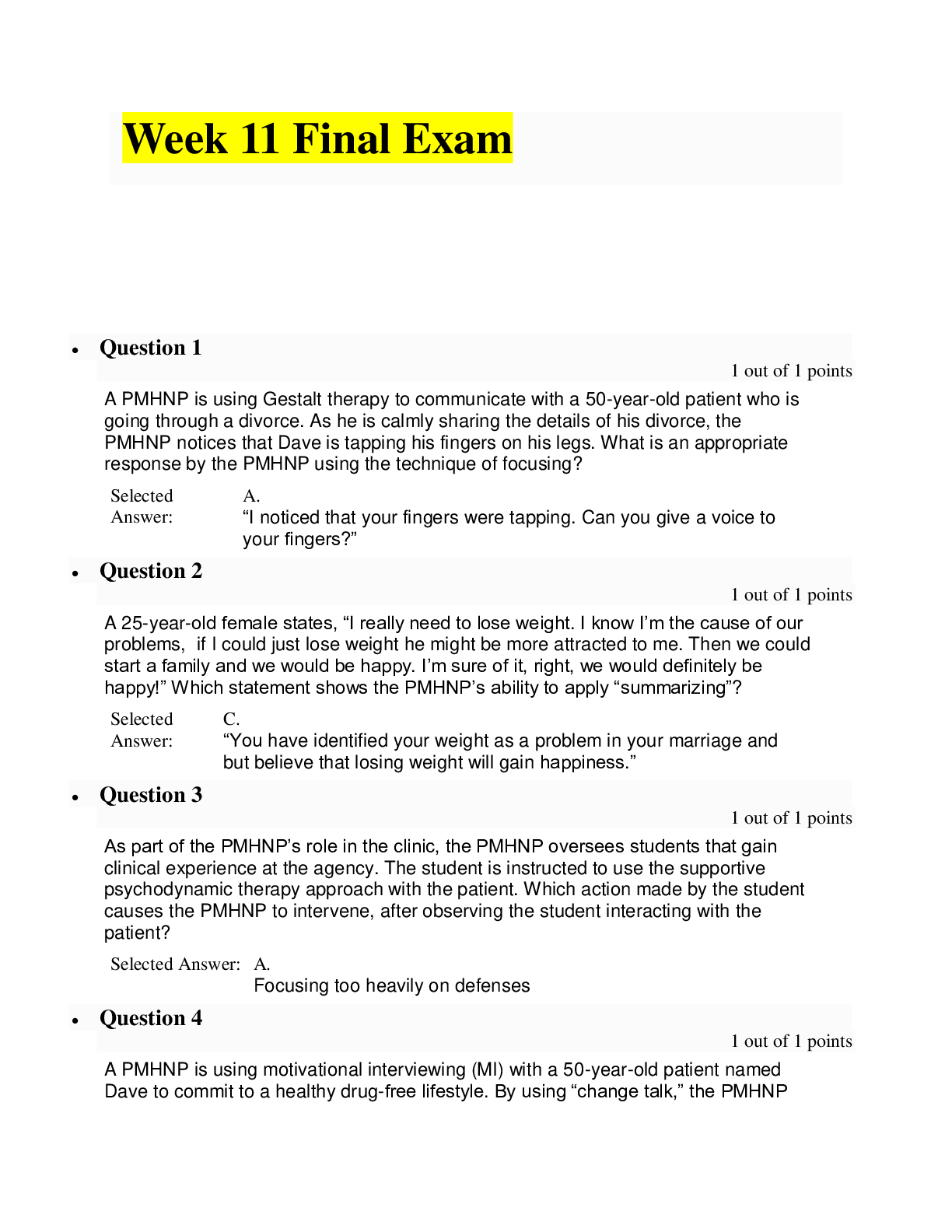
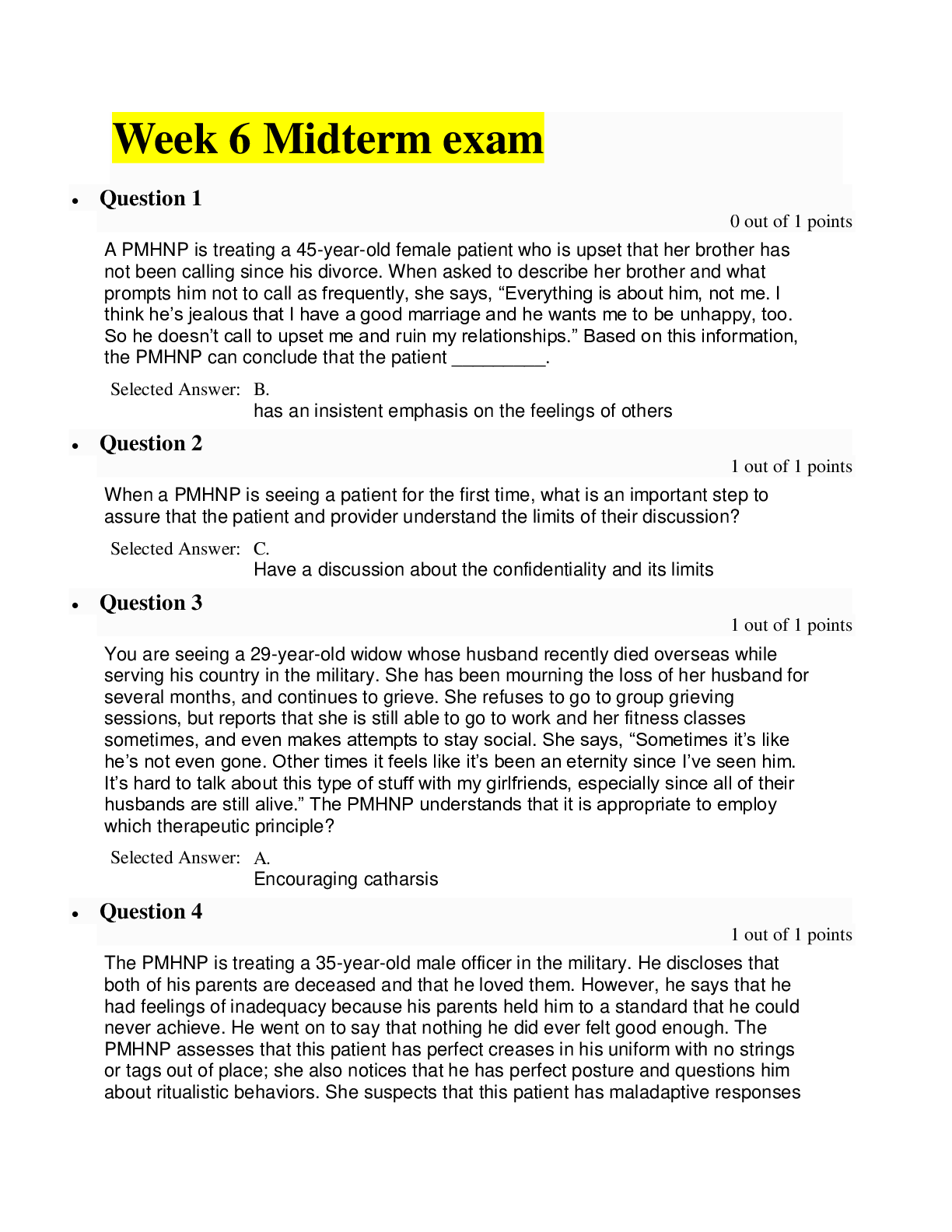
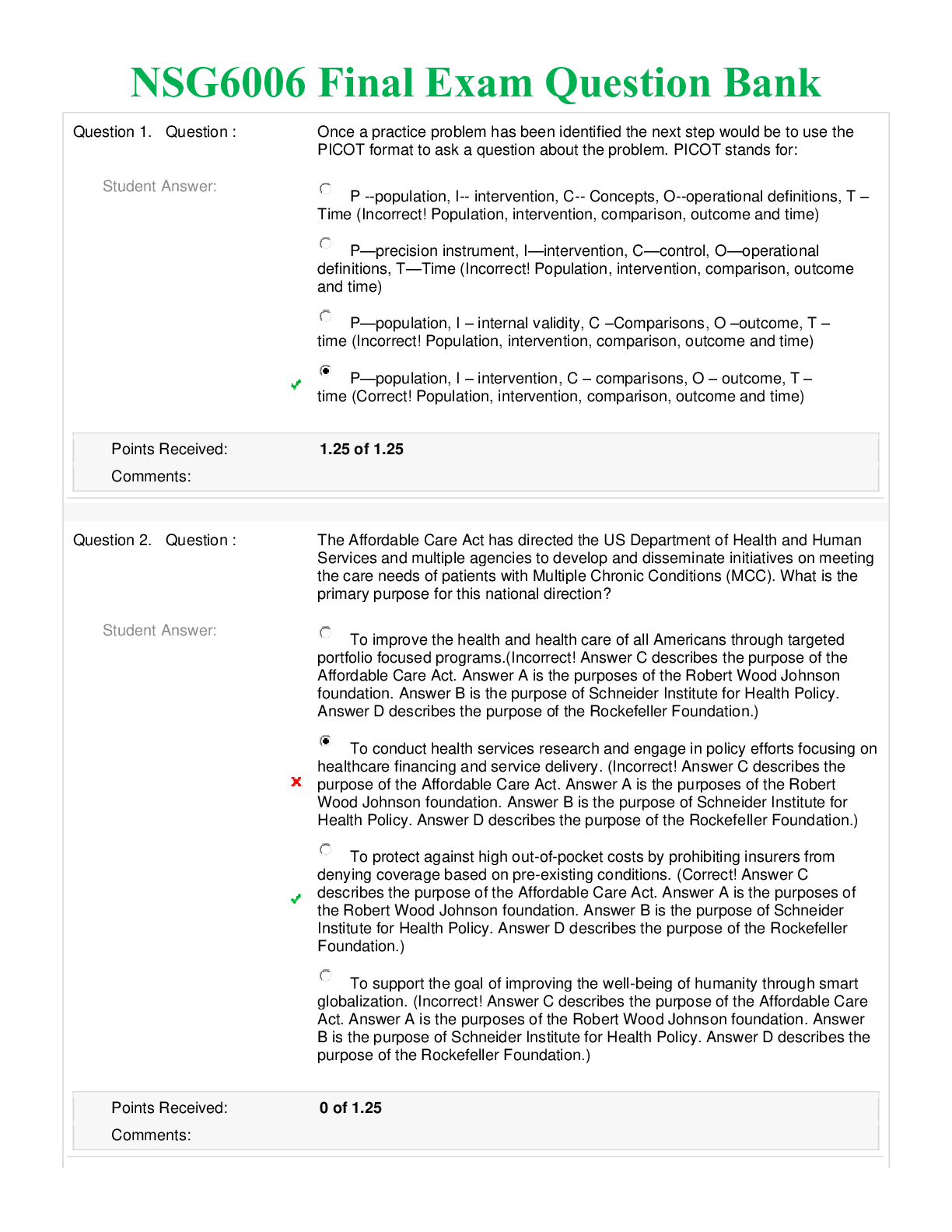
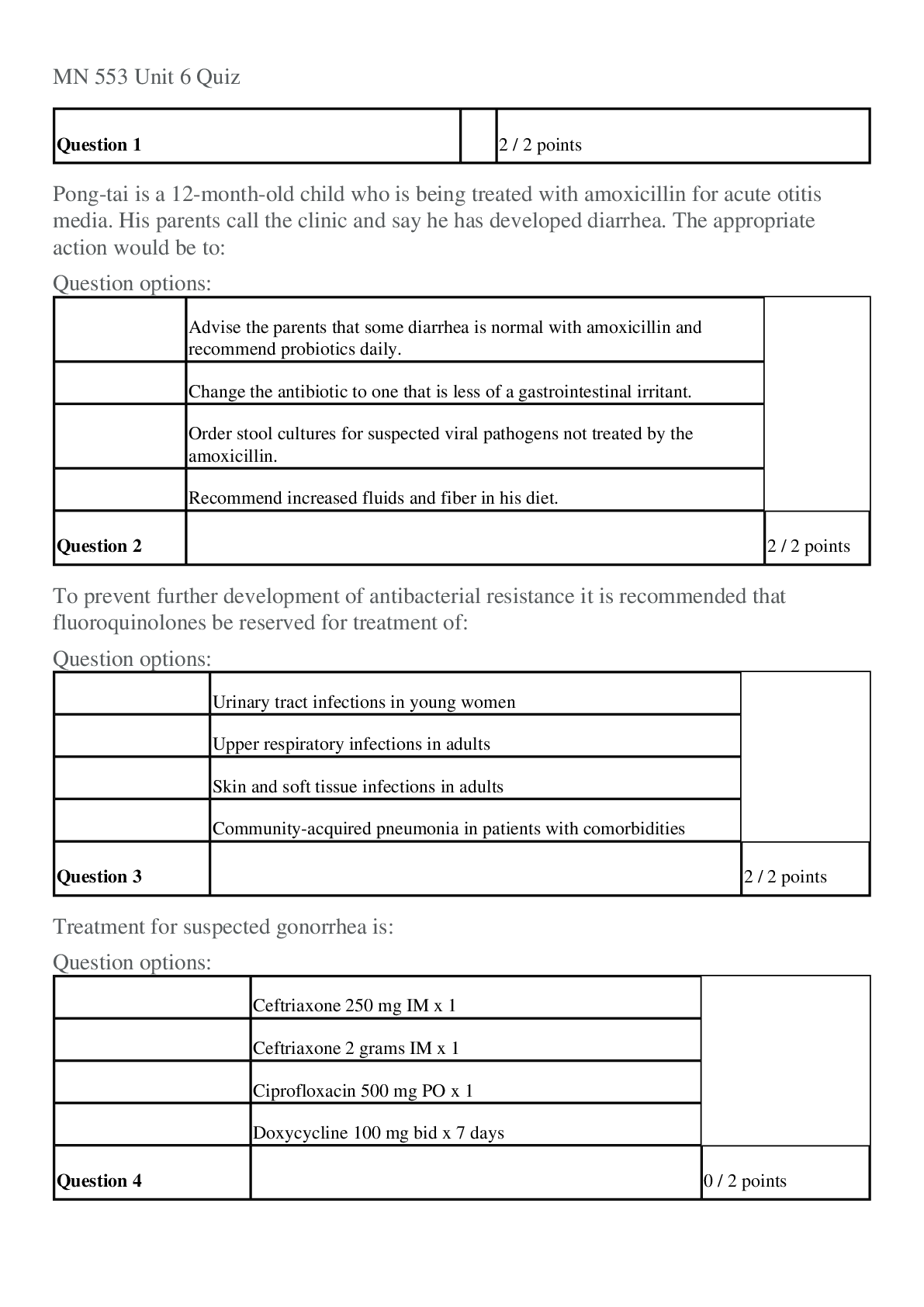
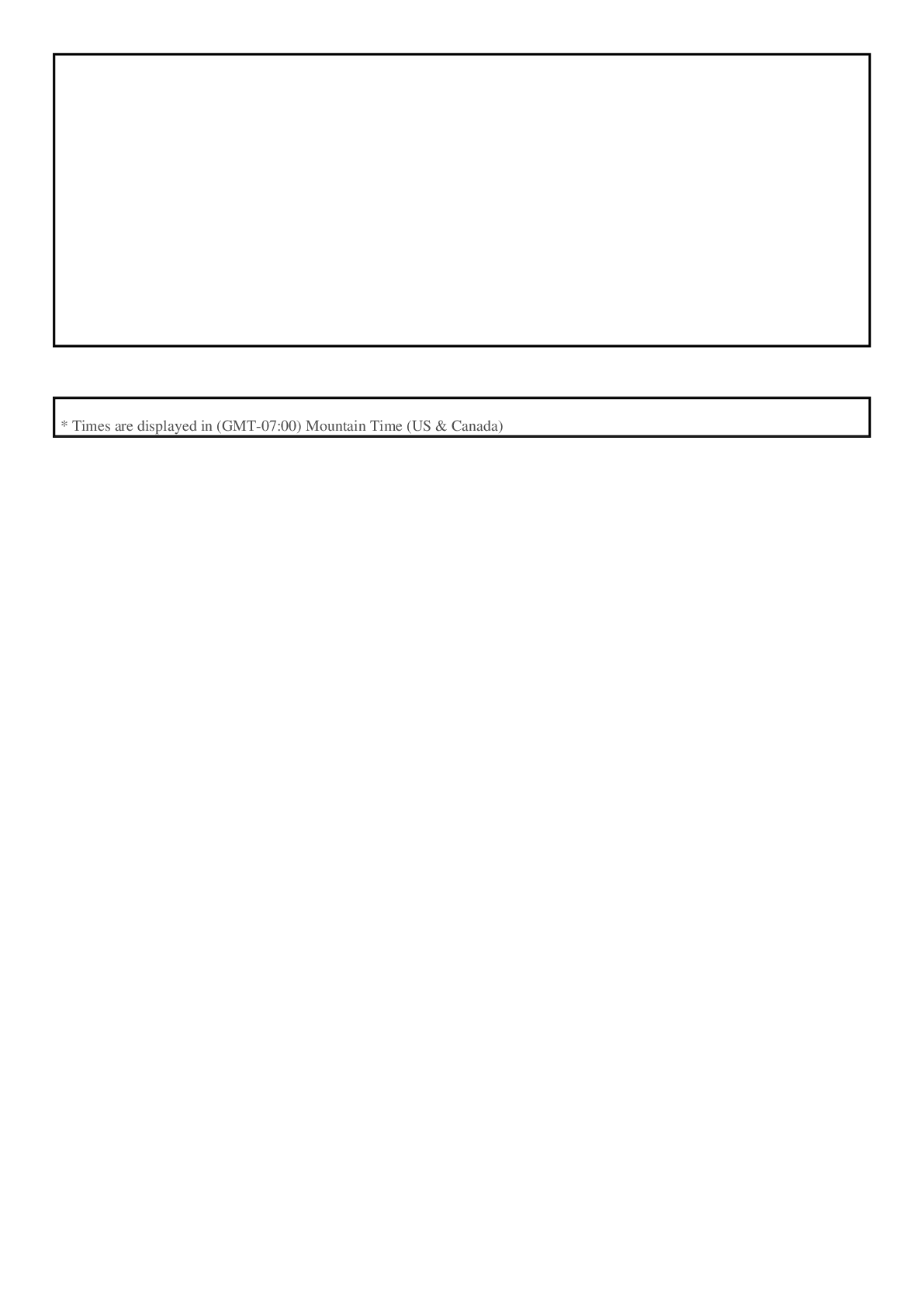

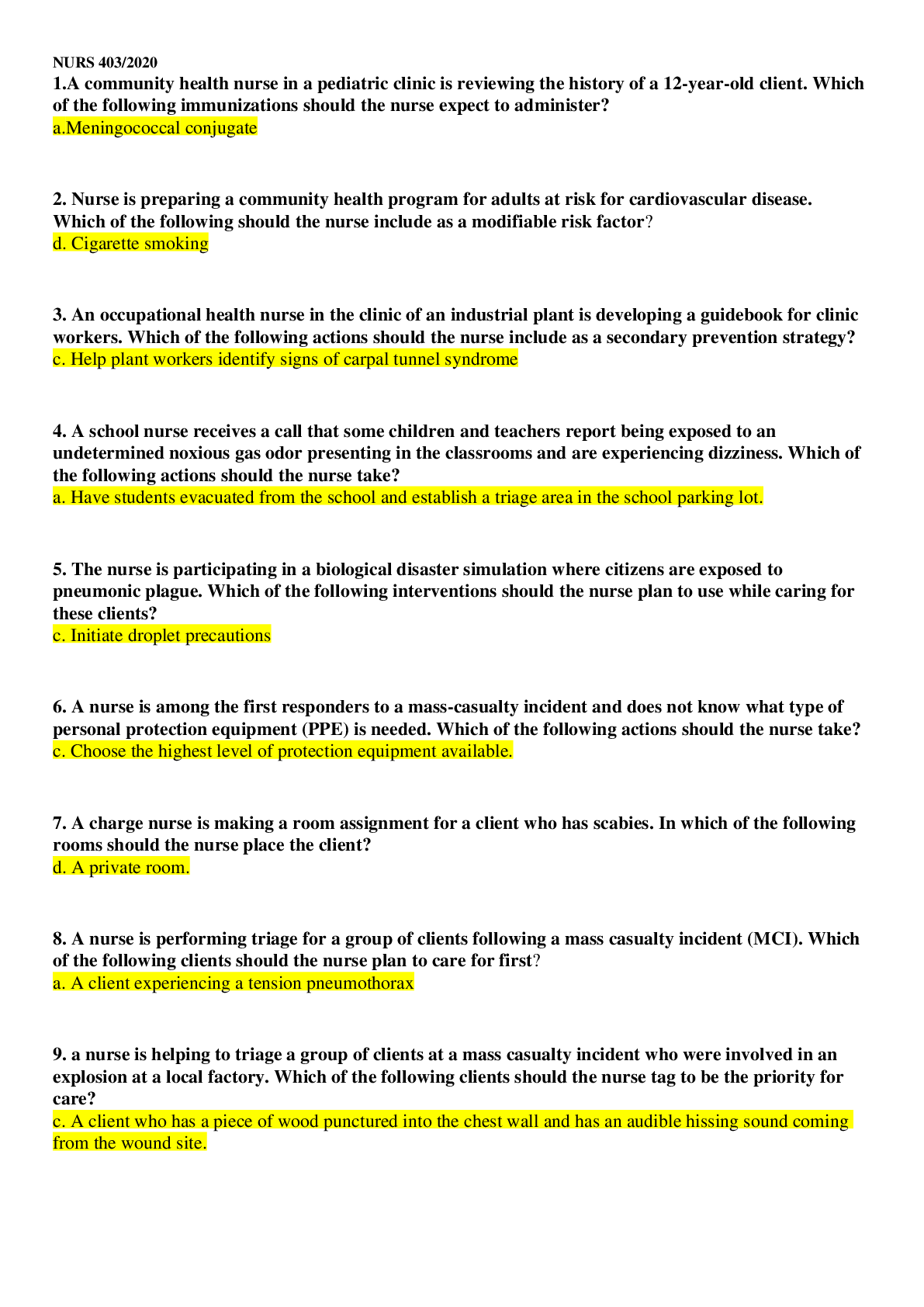
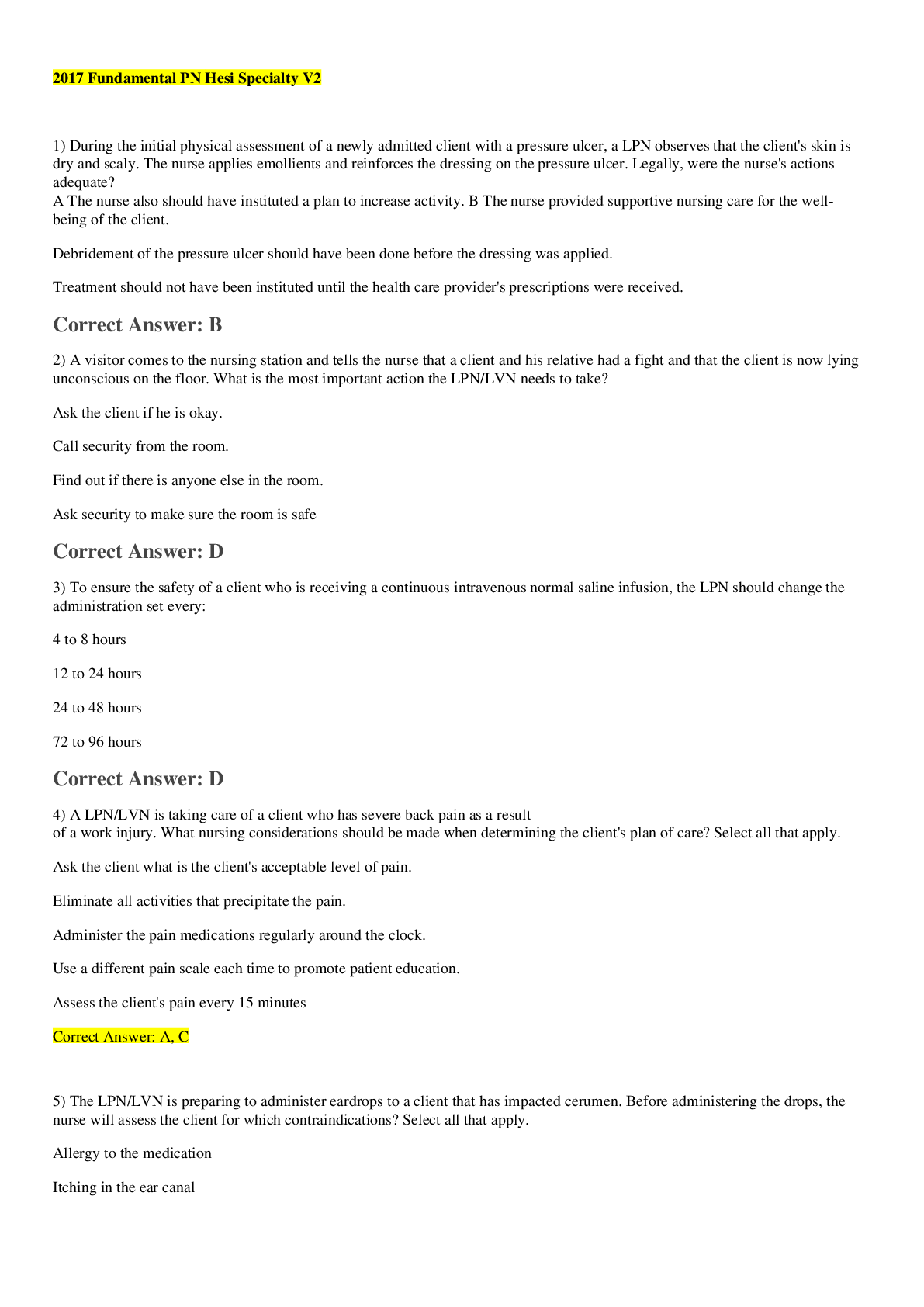
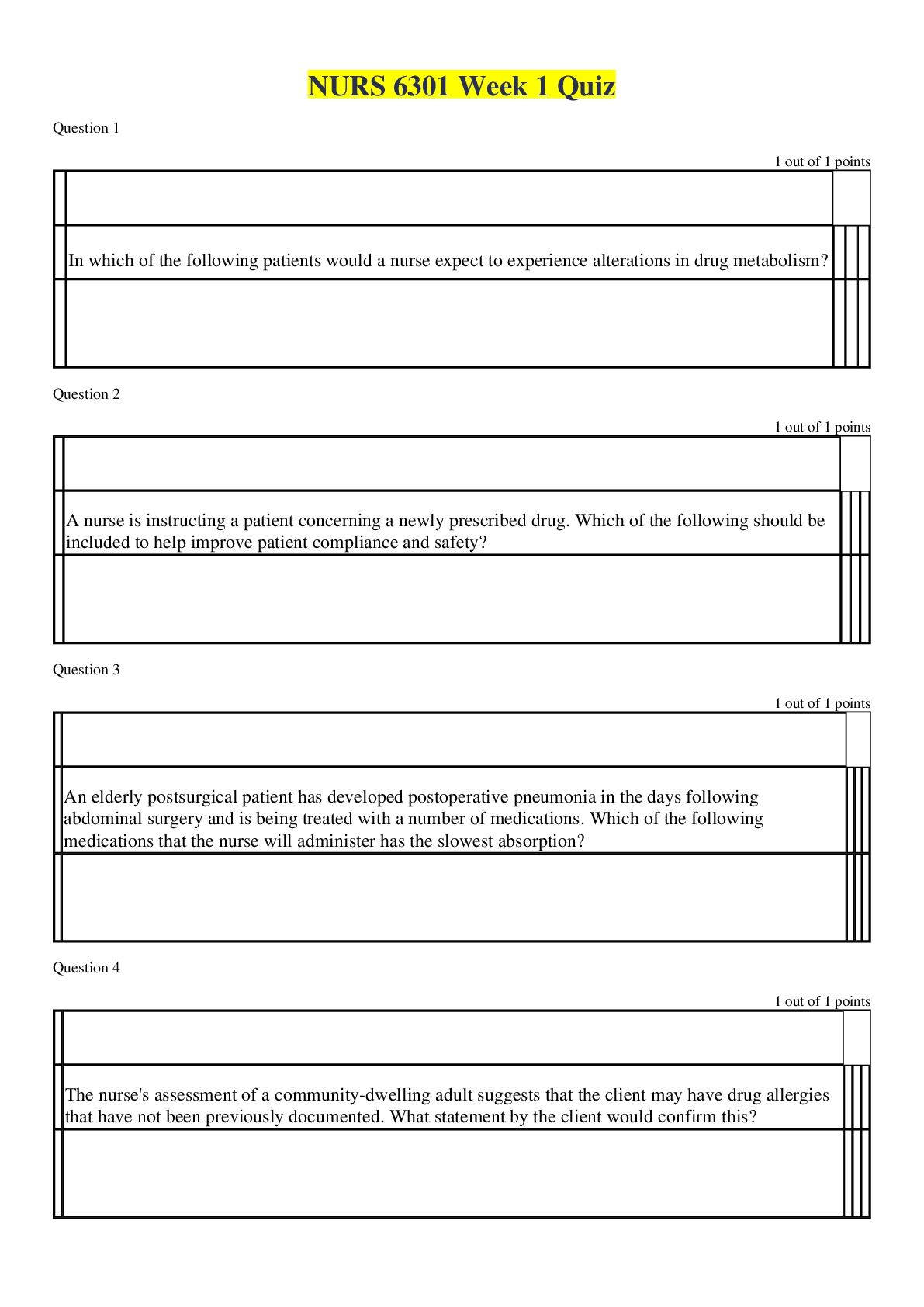
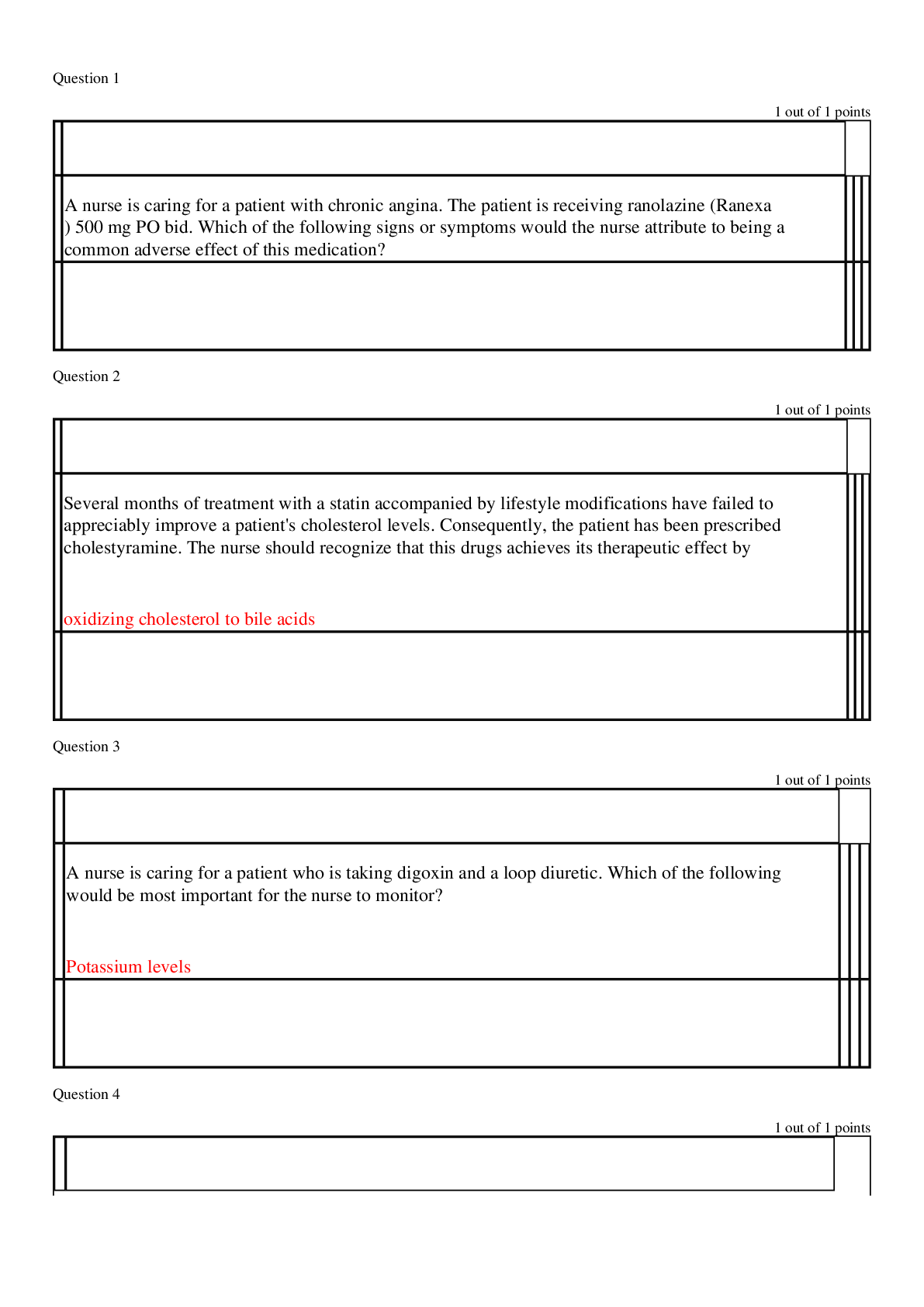
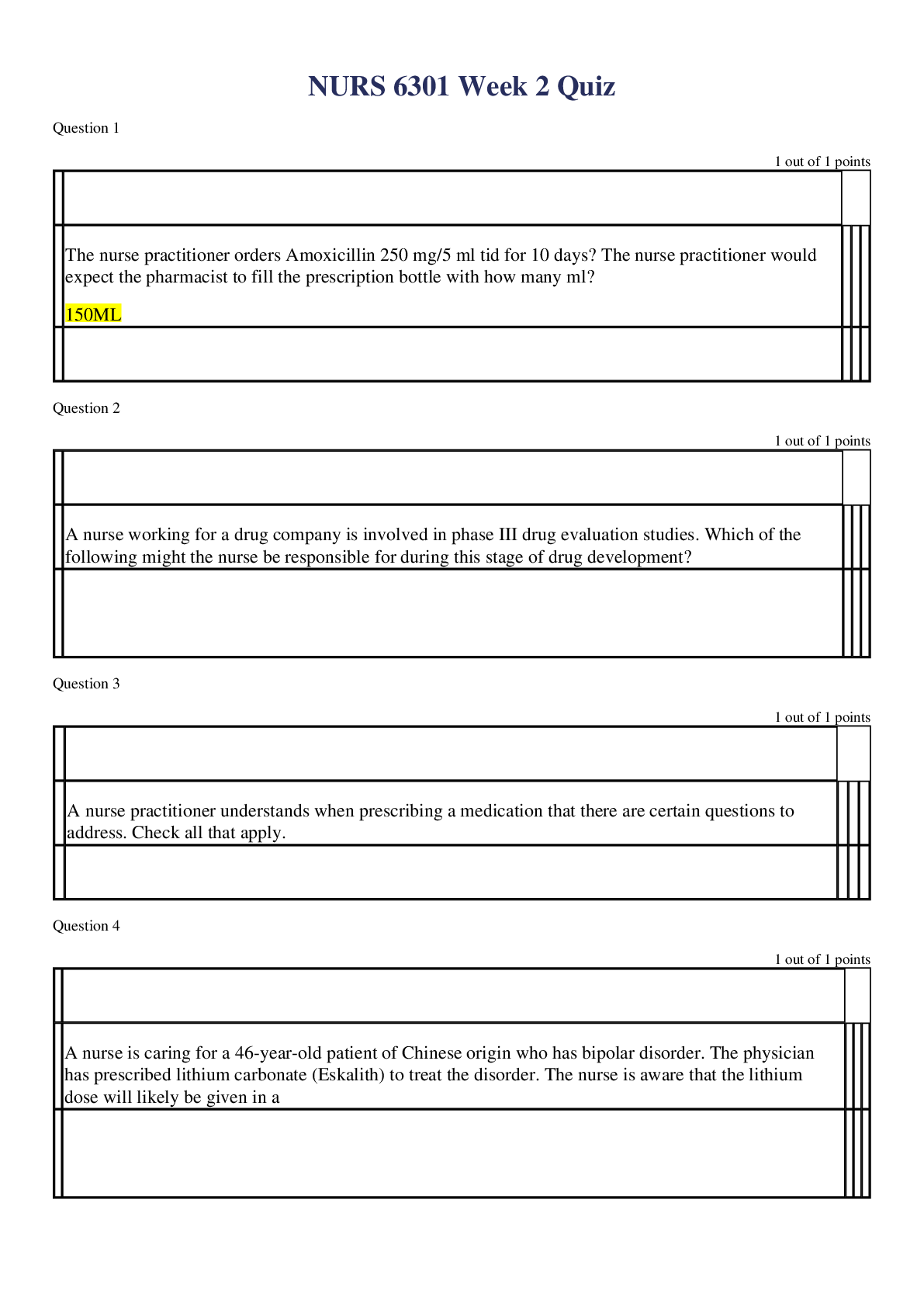
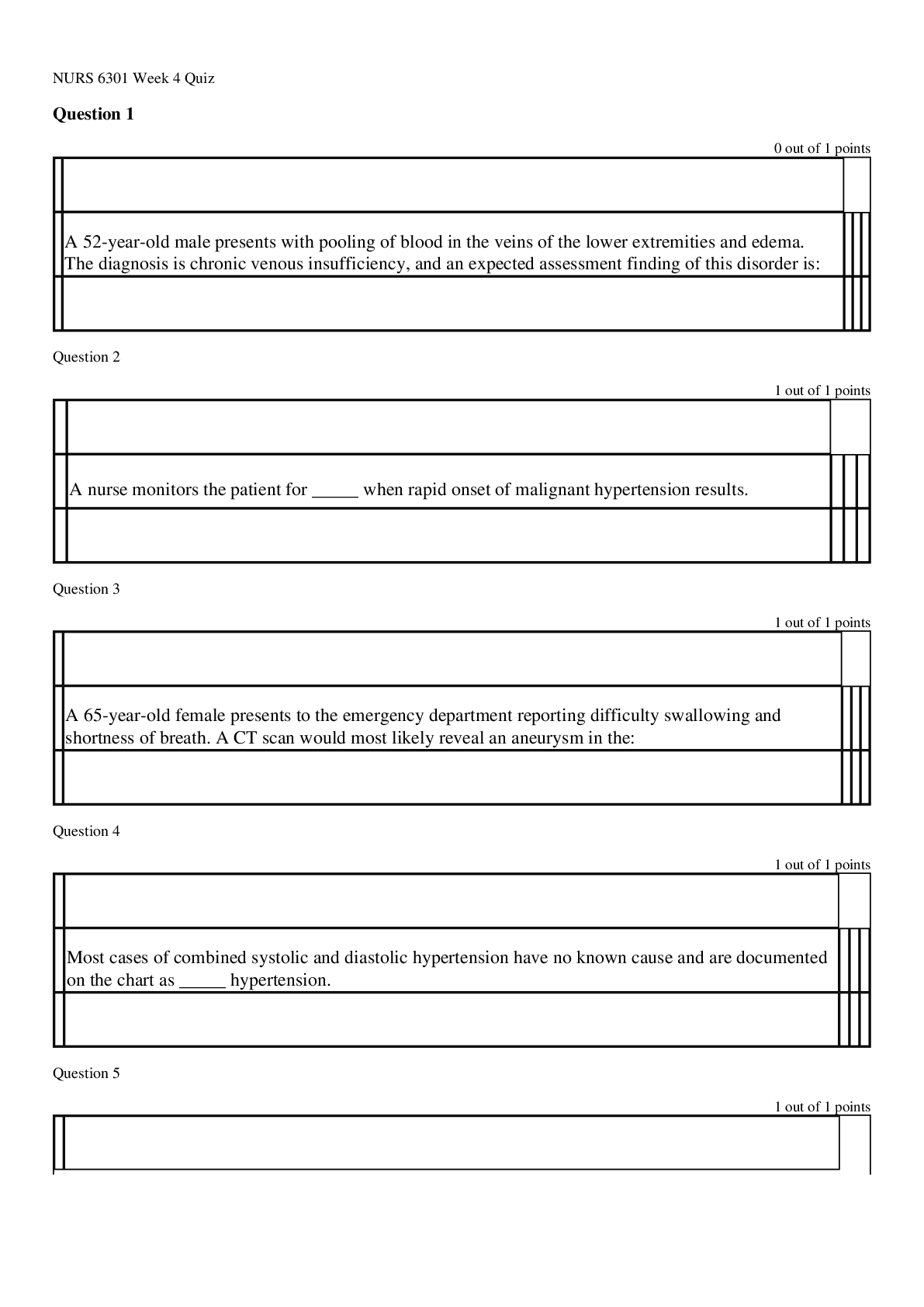
 – Faulkner CC.png)
 – Faulkner CC.png)
 – Faulkner CC.png)
 – Faulkner CC.png)
 – Faulkner CC.png)






